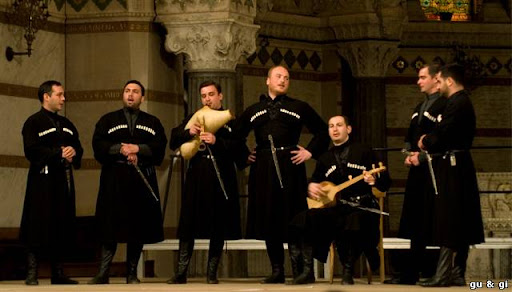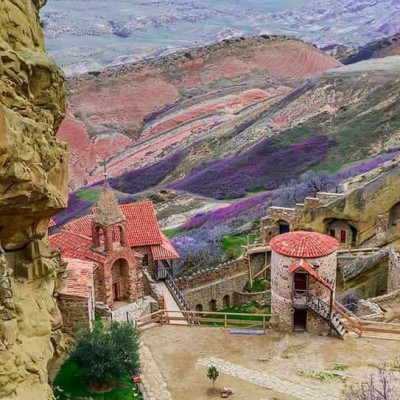
Georgian folk music is one of the most remarkable cultural treasures in the world, a tradition that reflects the history, spirit, and identity of the Georgian people. Famous for its powerful polyphony, this music is not only a form of artistic expression but also a living heritage that has been passed down through generations. Recognized by UNESCO as an Intangible Cultural Heritage of Humanity, Georgian folk music remains one of the oldest and most unique forms of vocal art. Its harmonies and styles are unlike anything else, offering listeners an emotional and unforgettable experience. Each region of Georgia has developed its own distinctive sound. In Kakheti, songs are lyrical and soulful, often tied to wine-making and agricultural life. In Guria, music is fast, complex, and includes “krimanchuli,” a rare yodel-like singing technique. In the highlands of Svaneti, songs preserve an archaic style with deep, mystical polyphony that feels timeless. This variety shows how geography, history, and everyday life shaped the soundscape of Georgia. At the heart of the tradition lies polyphony: the blending of several independent melodies sung at the same time. Unlike Western harmonies, Georgian polyphony is raw, dynamic, and built on oral tradition rather than written notation. Small groups sing without instruments, creating tension and release through dissonant yet beautiful sounds that stir the emotions. Ethnomusicologists often describe Georgian polyphony as one of the most ancient and sophisticated musical systems in the world. The themes of Georgian folk songs reflect all aspects of life: work songs that kept rhythm during plowing or harvest, ritual songs linked to festivals, weddings, or funerals, heroic songs celebrating warriors, lullabies expressing family love, and spiritual chants that reveal both pagan and Christian influences. Music was never separate from daily life—it was sung in vineyards, in mountain pastures, at family tables, and in churches. Instruments also add color to the tradition. The panduri and chonguri, plucked string instruments, bring gentle melodies, while the doli drum sets rhythm. The salamuri flute and changi harp enrich the sound, especially in dances where movement and music blend together. Yet, the human voice remains central, carrying the essence of Georgia’s soul. Historically, folk music has played a vital role in preserving Georgian identity. In times of hardship or foreign domination, songs became a way of resistance and cultural survival. In the 20th century, ensembles and researchers collected and performed traditional songs, bringing them to stages worldwide. Famous groups like the Rustavi Ensemble and Georgian Voices have amazed international audiences, and UNESCO’s recognition further highlighted its value. Today, visitors to Georgia can still experience this living tradition. Concerts in Tbilisi, village gatherings, church chants, and festivals all offer chances to hear polyphony firsthand. Often, the most moving moments happen spontaneously during a supra, the traditional Georgian feast, when friends and family raise toasts and voices together, creating unforgettable harmony. Modern musicians continue to experiment with this heritage, blending folk polyphony with jazz, classical, or even electronic music, showing that the tradition is alive and evolving. Georgian folk music is not a relic of the past but a vibrant part of the present, still shaping the cultural identity of the nation. In conclusion, Georgian folk music is the heartbeat of the country, uniting voices across time and place. Its polyphony symbolizes unity in diversity, while its themes capture daily life, spirituality, and history. To hear it is to feel Georgia itself—a land where voices echo across mountains and centuries, carrying the soul of a people who continue to sing.






 Deutsch
Deutsch
 русский
русский
